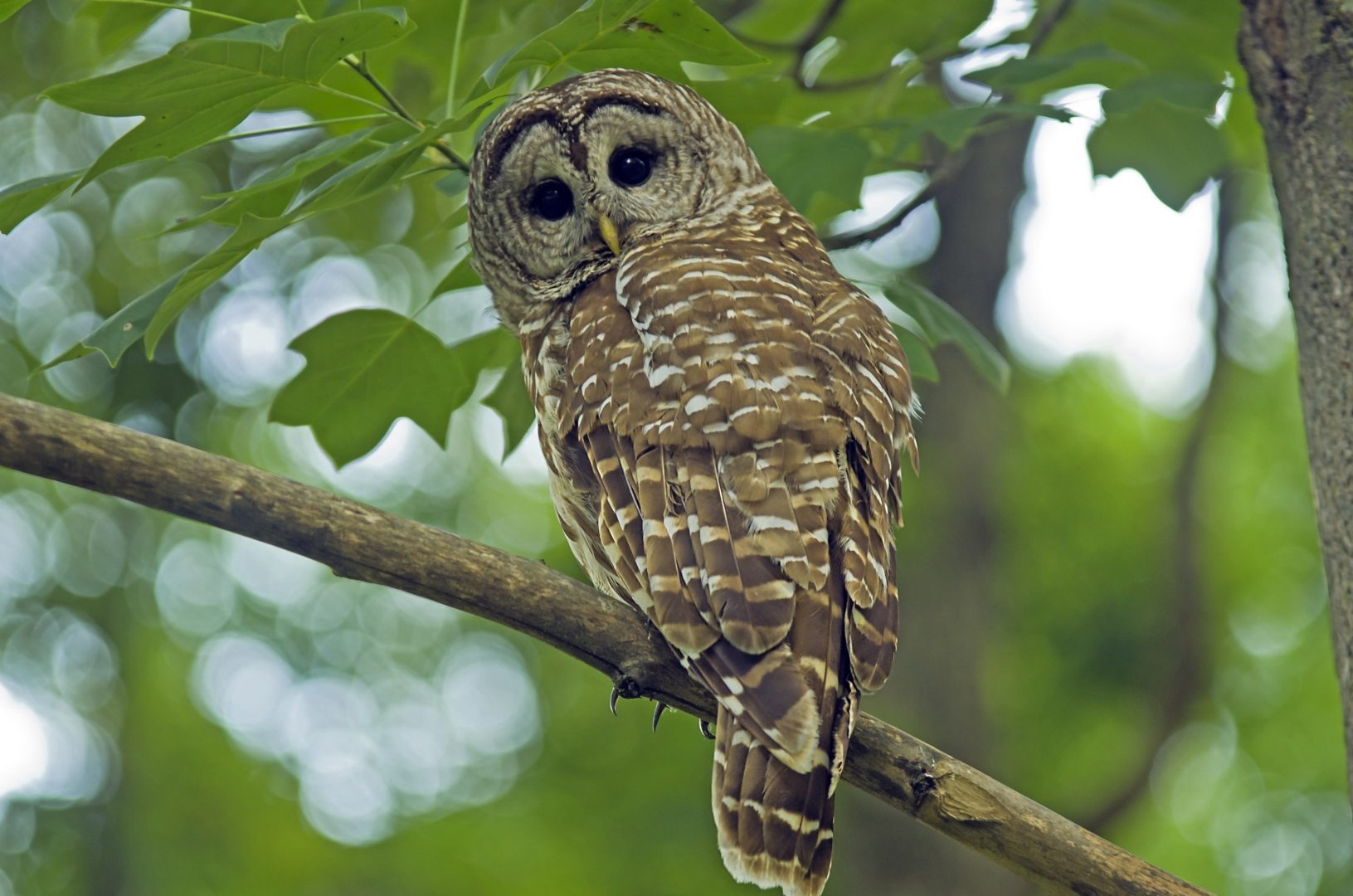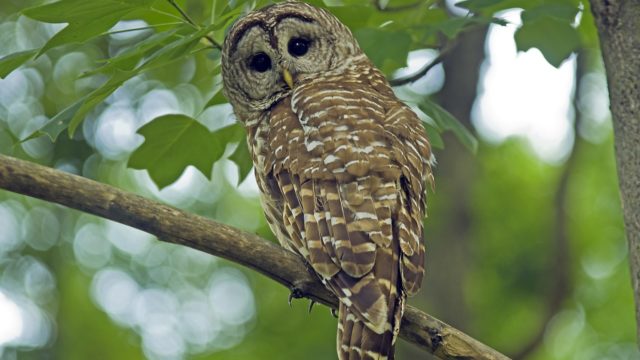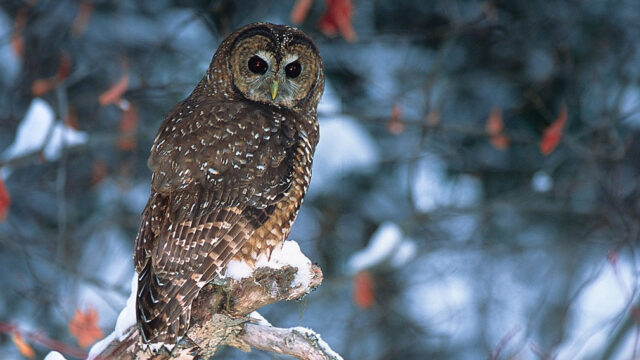This game-changer for conservation efforts was made possible by 20 long years of First Nation leadership and overwhelming public pressure
VANCOUVER / UNCEDED xʷməθkʷəy̓əm, Sḵwx̱wú7mesh AND səlilwətaɬ TERRITORIES Today Spotted Owl advocates celebrate the Federal government’s release of an updated draft recovery strategy that identifies over 400,000 hectares of Spotted Owl critical habitat. This historic win for the Spotted Owl resulted from overwhelming public pressure and First Nations leadership, backed by robust scientific evidence to support owl survival and recovery.
In 2023, the government consulted the public and First Nations on a revised draft of the strategy that removed almost half of that critical habitat needed for owl recovery. This move sparked a wave of criticism and submissions calling for reinstatement of the deleted habitat. The Wilderness Committee, represented by Ecojustice, along with Spô’zêm First Nation, consulted experts on this deficient strategy and made submissions detailing how the Federal government must return to a previous draft of the strategy from 2021 that contained scientifically sound mapping and owl-survival strategies. “This new strategy breathes life into the fight to keep the Spotted Owl from disappearing forever in Canada,” said Wilderness Committee Protected Areas Campaigner Joe Foy. “I am so grateful for all those who fought against extinction and demanded better for the Spotted Owl”.
Under the Species at Risk Act, (SARA) the Minister must publish a recovery document that identifies a species’ critical habitat – i.e., science-based habitat mapping that is necessary for the species survival and recovery. Despite being recognized as endangered under SARA since 2003, the Spotted Owl never had its critical habitat identified. Until today. “This is a significant step in the right direction to recovering the imperiled Spotted Owl,” said Ecojustice lawyer Kegan Pepper-Smith. “We applaud Minister Guilbeault for reinstituting what appears to be a science-based and SARA-compliant critical habitat identification for the species.”
First Nations leadership in B.C. has been outspoken in calling for protection of Spotted Owl habitat with powerful submissions from the Spô’zêm First Nation, Union of BC Indian Chiefs and the First Nations Leadership Council. “Our ancestors taught us the Spotted Owl is our messenger between this world and the spirit world and how they speak to us, and this new recovery strategy gives them chance at survival,” said Spô’zêm First Nation Chief James Hobart. “It’s regrettable how much time has passed in this process and how many owls were lost. I call upon our ancestors for their forgiveness and support as we find the tools to restore and permanently protect what’s left of the sacred homeland of our Skalula.”
Ecojustice and the Wilderness Committee say the recovery strategy and critical habitat identification are necessary first steps, but stress that immediate on-the-ground action is required. The groups say waiting another five years to actually protect the owl’s habitat is unacceptable and that the B.C. government must end all logging in the owl’s habitat immediately while recovery plans are further developed.”
“The message in this strategy is clear as day — we need all logging in Spotted Owl critical habitat to cease immediately,” said Foy. “Far too much time has been wasted already and now every precious piece of remaining critical habitat must be protected.”
Background:
There is only one Spotted Owl left in the wild in all of Canada. Spotted Owls need old-growth forest to survive and recover. Despite this, the B.C. government continues to allow logging in spotted owl habitat, including through the province’s own logging agency, BC Timber Sales. Additionally, B.C. is one of the few provinces that lacks a standalone law to protect endangered species — even though it is home to more than 2,000 species at risk.
For years, Spô’zêm First Nation leadership, Wilderness Committee and Ecojustice have been calling on the federal government to publish a recovery strategy that fully maps all Spotted Owl critical habitat and ensures it is permanently protected. The release of this draft recovery strategy kicks off a 60-day consultation period. Once that consultation period is complete, the final recovery strategy must be published immediately and work done to complete an action plan, the next step in the process, as soon as possible.
Without federal intervention to protect the species, Spotted Owls — and their old-growth forest habitat — are at serious risk of disappearing from the wild forever.
About:
The Wilderness Committee works to protect life-giving biological diversity through strategic research, community mobilizing and grassroots public education. Their offices are in Vancouver, Victoria, Winnipeg and Toronto, with supporters, volunteers and activists from coast to coast to coast. They take action to protect nature, defend wildlife and fight for a stable and healthy climate.
Ecojustice uses the power of the law to defend nature, combat climate change and fight for a healthy environment. Its strategic, public interest lawsuits and advocacy lead to precedent-setting court decisions, law and policy that deliver lasting solutions to Canada’s most urgent environmental problems. As Canada’s largest environmental law charity, Ecojustice operates offices in Vancouver, Calgary, Toronto, Ottawa and Halifax.




